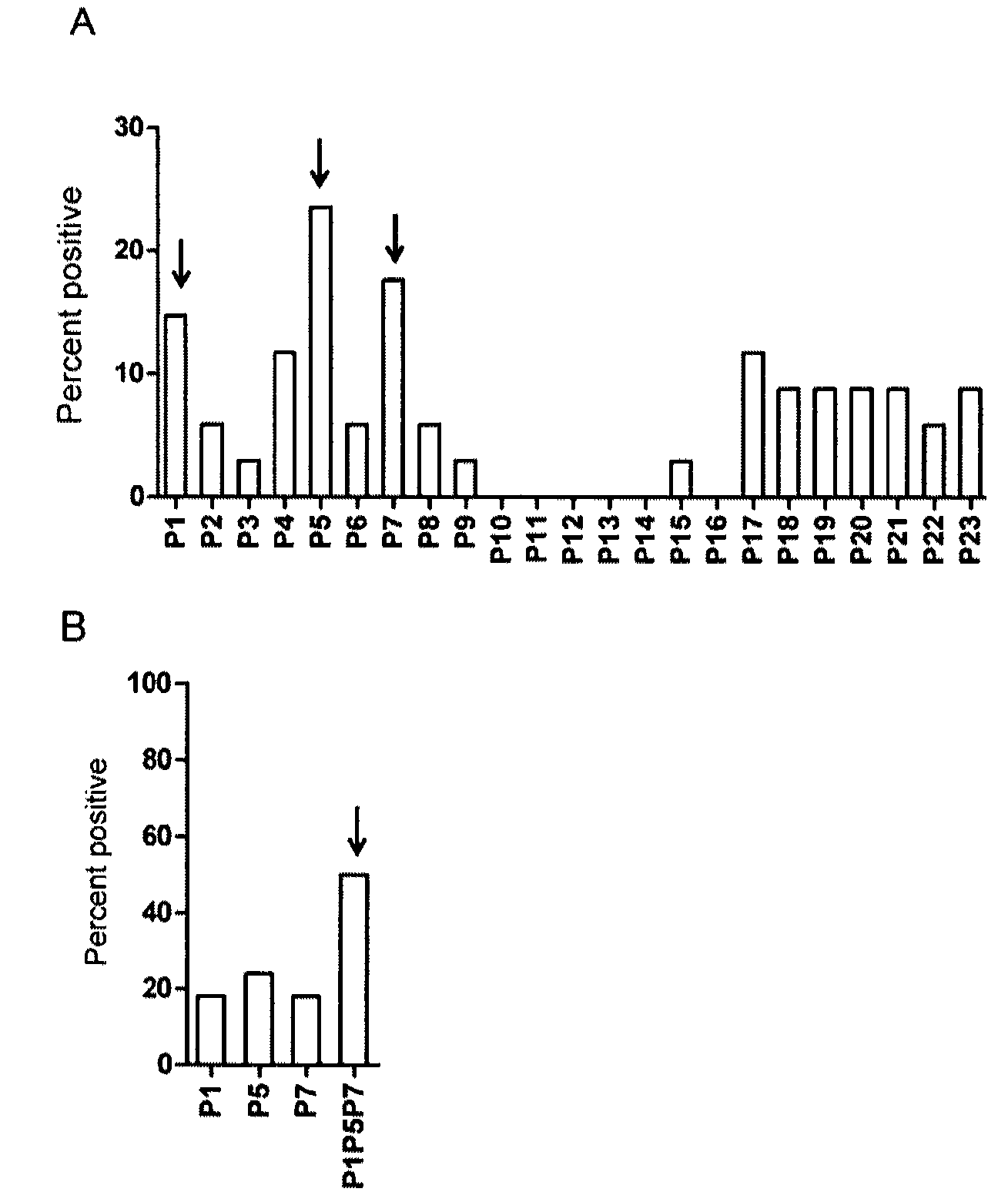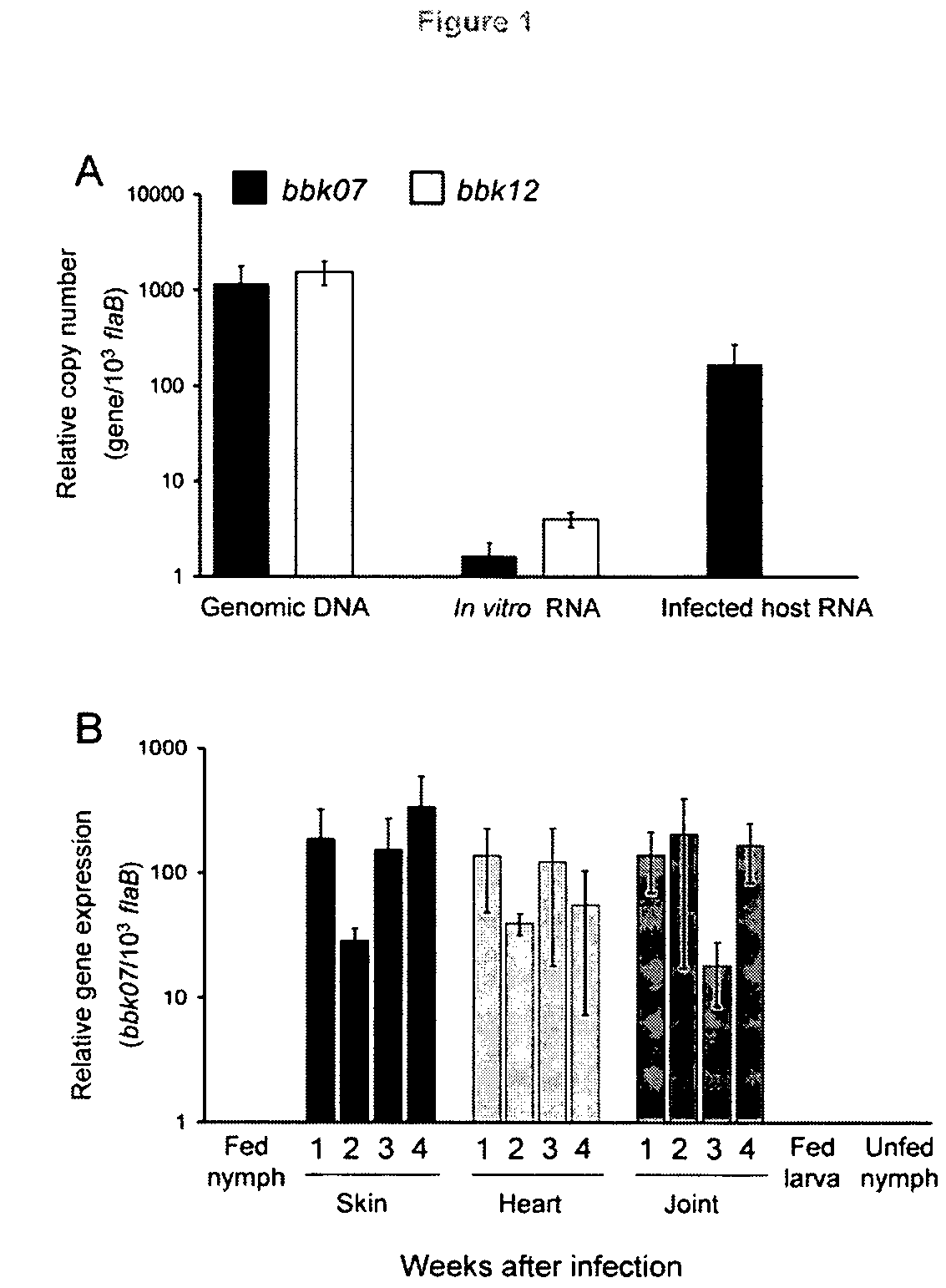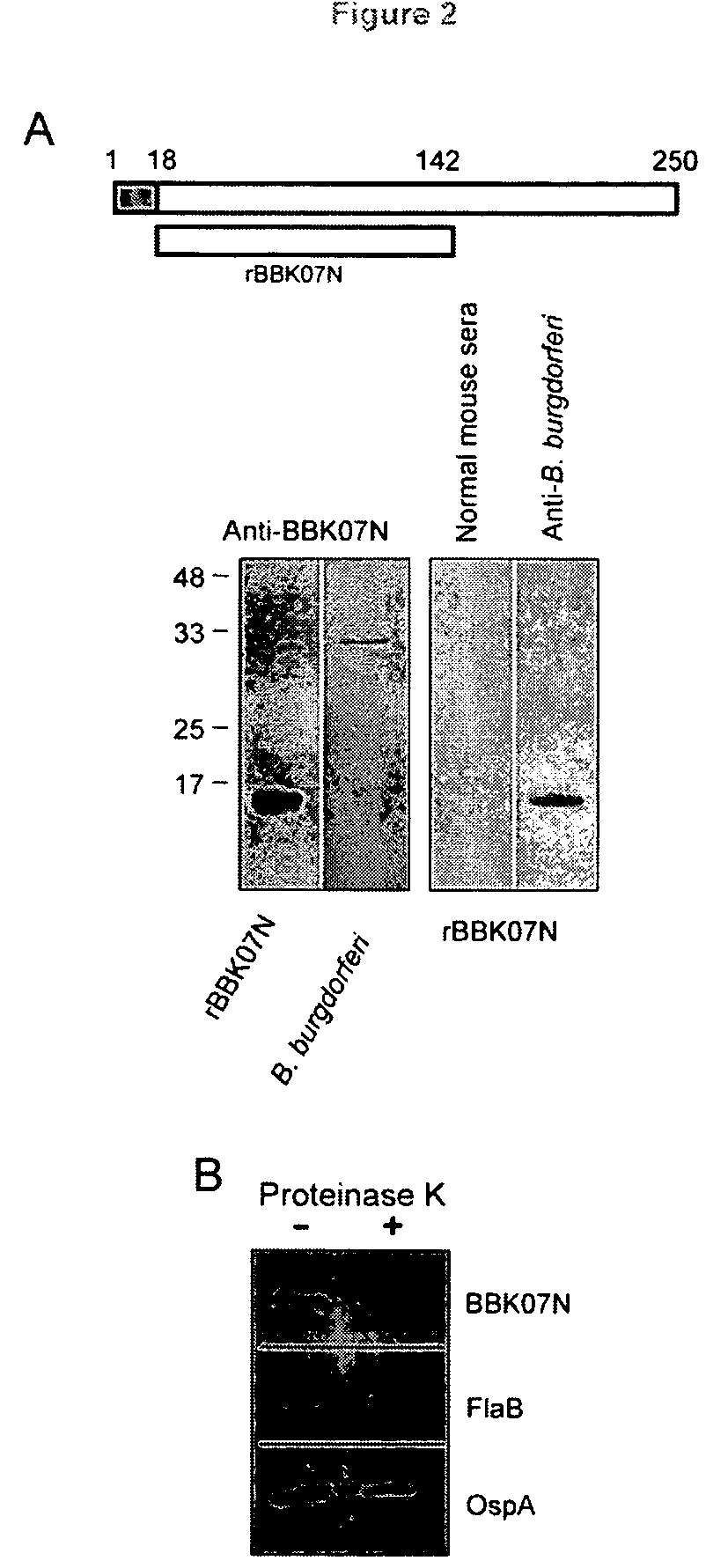Characterization of BBK07 antigen of Borrelia burgdorferi and methods of use
a technology of borrelia burgdorferi and antigen, which is applied in the field of characterization of bbk07 antigen of borrelia burgdorferi and methods of use, can solve the problems of difficult direct detection of bacterium, false diagnosis, complicated diagnosis, etc., and achieves enhanced serodiagnosis sensitivity, enhanced detection sensitivity of lyme disease, and superior serodiagnostic potential
- Summary
- Abstract
- Description
- Claims
- Application Information
AI Technical Summary
Benefits of technology
Problems solved by technology
Method used
Image
Examples
example 1
[0147]Indentification of B. burgdorferi genes that are induced in infected murine hosts. To identify B. burgdorferi genes that are highly expressed in murine joints, we employed quantitative RT-PCR (qRT-PCR) approach to assess the spirochete transcriptome in mice, during the development of inflammation in joints. A total of 100 spirochete genes were selected for expression analysis, based on their putative association with the spirochete membrane, as determined by their database annotation and in silico analyses for extracellular exposure. Groups of mice (5 animals / group) were infected with B. burgdorferi (105 spirochetes / mouse) and samples of skin, bladder and tibiotarsal joints were collected and frozen in liquid nitrogen at one-week intervals between 1 and 4 weeks of infection. Total RNA was extracted from tissue samples and used for qRT-PCR analysis of B. burgdorferi gene-specific mRNA. The expression of each gene in different murine tissues was tabulated, as gene expression lev...
example 2
[0149]BBK07, but not the paralogous gene bbk12, is selectively expressed in the mammal during the infection cycle of B. burgdorferi. The paralogous gene products bbk07 and bbk12 have recently been identified as potential immunogens of B. burgdorferi (Barbour, A. G. et al., 2008, Infect. Immun. 76, 3374-3389). The genes are highly homologous, with 87% amino acid identity in their overlapping sequences (Fraser, C. M. et al., 1997, Nature 390. 580-265). Due to the nearly identical sequences of BBK07 and BBK12, it is unclear if the host immune response is directed against either or both genes. To ascertain their individual expression patterns, we developed two sets of oligonucleotide primer pairs targeting variable regions of each gene, which specifically amplified either bbk07 or bbk12 with low cross-reactivity, as confirmed by the DNA sequencing of the corresponding amplicons (data not shown). These primers were then used to determine the relative expression levels of each gene in cul...
example 3
[0151]Amino-terminal region of BBK07 is surface exposed and immunogenic. Since BBK07 is annotated as a lipoprotein, which might be exposed on the spirochete surface, we next assessed the surface localization of BBK07. Expressing a full-length or truncated protein representing carboxy-terminal half of BBK07 proved difficult in Escherichia coli, however, an amino-terminal fragment could be purified in sufficient quantities and used for further experimentation. This fragment contained the amino terminus through the first half of the mature protein, referred as BBK07N (FIG. 2A, upper panel). Specific antiserum was generated by immunizing mice with BBK07N and adjuvant. In agreement with a previous study showing the immunogenicity of in vitro translated BBK07 (Barbour et al, 2008, supra), BBK07N also evoked a robust immune response and BBK07N anti-serum recognized both purified BBK07N and native BBK07 from B. burgdorferi lysate (FIG. 2A, lower panel).
[0152]To test the surface exposure of ...
PUM
| Property | Measurement | Unit |
|---|---|---|
| dissociation constant | aaaaa | aaaaa |
| dissociation constant | aaaaa | aaaaa |
| dissociation constant | aaaaa | aaaaa |
Abstract
Description
Claims
Application Information
 Login to View More
Login to View More - R&D
- Intellectual Property
- Life Sciences
- Materials
- Tech Scout
- Unparalleled Data Quality
- Higher Quality Content
- 60% Fewer Hallucinations
Browse by: Latest US Patents, China's latest patents, Technical Efficacy Thesaurus, Application Domain, Technology Topic, Popular Technical Reports.
© 2025 PatSnap. All rights reserved.Legal|Privacy policy|Modern Slavery Act Transparency Statement|Sitemap|About US| Contact US: help@patsnap.com



